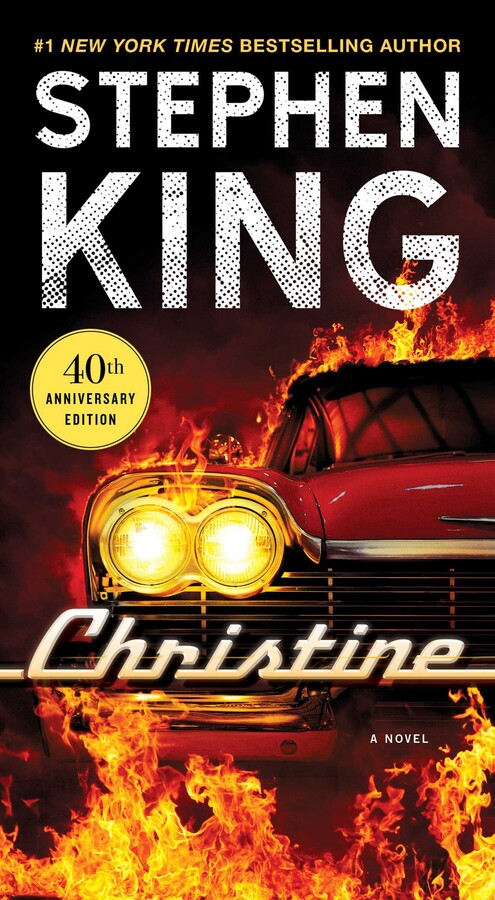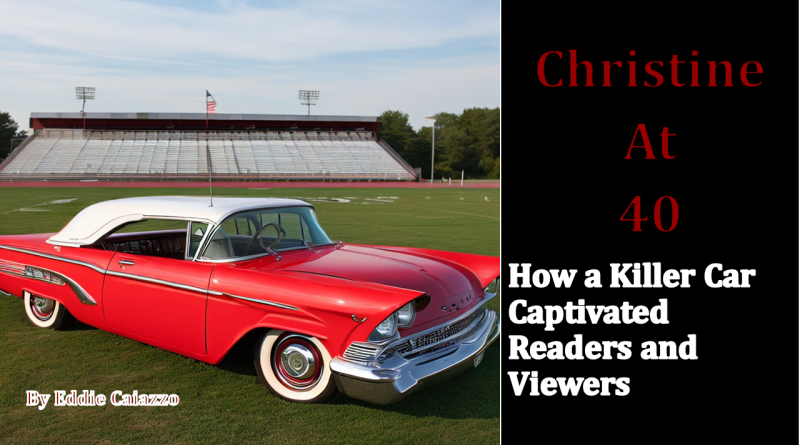Christine at 40: How a Killer Car Captivated Readers and Viewers
In 1983, two masters of horror joined forces to create one of the most iconic stories of the genre: Christine. The novel by Stephen King and the film by John Carpenter both tell the tale of a 1958 Plymouth Fury that is possessed by an evil spirit and wreaks havoc on the lives of those who cross its path. As Christine celebrates its 40th anniversary this year, let’s take a look back at how this killer car captivated readers and viewers alike.
The novel was published by Viking on April 29, 1983, and was King’s 13th novel and the ninth under his own name. It was inspired by a simple idea that King had when he saw his car’s odometer turn from 9999.9 to 10,000: what if a car could run backward and get younger instead of older? He started writing it as a short story, but it soon grew into a long novel that explored themes such as obsession, jealousy, bullying, and adolescence.
The story is set in Libertyville, Pennsylvania, and follows Arnie Cunningham, a nerdy high school senior who buys a beat-up, custom red-and-white 1958 Plymouth Fury from an old man named Roland LeBay. Arnie becomes obsessed with restoring the car, which he names after its previous owner’s daughter who died in it. As he works on the car, he changes from a timid outcast to a confident and arrogant rebel. He also starts dating Leigh Cabot — “the prettiest girl in school” — much to the dismay of his best friend Dennis Guilder.
However, Arnie soon discovers that Christine has a mind of her own, and a murderous one at that. The car can drive by itself, play 1950s rock songs on the radio, lock people inside, and repair its own damages. Christine also has a history of violence and death, as LeBay’s brother reveals that LeBay’s wife committed suicide in the car and that LeBay himself was a violent and abusive man. Christine becomes jealous of Arnie’s relationship with Leigh and starts killing anyone who threatens or insults Arnie or the car. Dennis and Leigh team up to try to save Arnie from Christine’s influence and stop the car’s rampage.
The novel was a bestseller and received mostly positive reviews from critics and fans. King’s writing style was praised for its vivid descriptions, realistic dialogue, and psychological insight. Some critics, however, found the novel too long, too violent, or too implausible. It is, however, the ultimate deadly coming-of-age story about a high school kid and his car.

The film adaptation was released by Columbia Pictures on December 9, 1983, just eight months after the novel’s publication. It was directed by John Carpenter, who had previously made horror classics such as Halloween (1978) and The Thing (1982). Carpenter was not initially interested in the project, as he felt it was too similar to his previous film The Car (1977), which also featured a killer vehicle. He only agreed to direct it after his previous film The Thing flopped at the box office and he needed a commercial hit. If The Thing was as successful then as it is today, we might never have gotten a John Carpenter/Stephen King collaboration!
Carpenter made some changes to the novel’s plot and characters to fit the film’s budget and runtime. He also added some elements of his own style, such as the use of widescreen cinematography, synth music and dark humor. He cast Keith Gordon as Arnie, John Stockwell as Dennis, Alexandra Paul as Leigh, Harry Dean Stanton as Detective Junkins, Robert Prosky as Will Darnell, Roberts Blossom as George LeBay and William Ostrander as Buddy Repperton. Carpenter’s casting choices were quite memorable, as these performances were all perfect for the film version of this story. Seeing Keith Gordon’s Arnie and his transformation from geek to badass was also enjoyable. The audience goes through all of the emotions with Arnie through this story from innocent, to sympathetic, to angry, to evil.
The film was a moderate success at the box office and received mixed reviews from critics and fans. Some praised Carpenter’s direction, Gordon’s performance, and the special effects of the car. Others criticized the film for being too slow-paced, too faithful to the novel, or too unoriginal. Our only gripe between the book and the film: Why did Carpenter move the story to California and out of Pennsylvania?
Despite the mixed reception, Christine has become a cult classic over the years and has influenced many other works of horror and pop culture. The car itself has become an icon of horror cinema and has appeared in various media such as video games, comics, TV shows and songs. With life imitating art so often as it does, the 1958 Plymouth Fury with a red-and-white paint scheme remains a desired piece sought out quite frequently by car collectors, inspiring many real-life fans to have restored or replicate their own versions of the car.
Christine is a story that taps into our primal fears of technology, possession and obsession. It is also a story that celebrates our love of cars, music and especially nostalgia. It is a story that has endured for 40 years and will continue to thrill generations to come.


